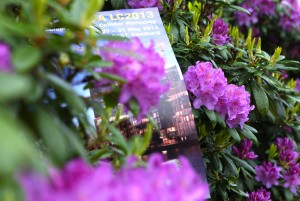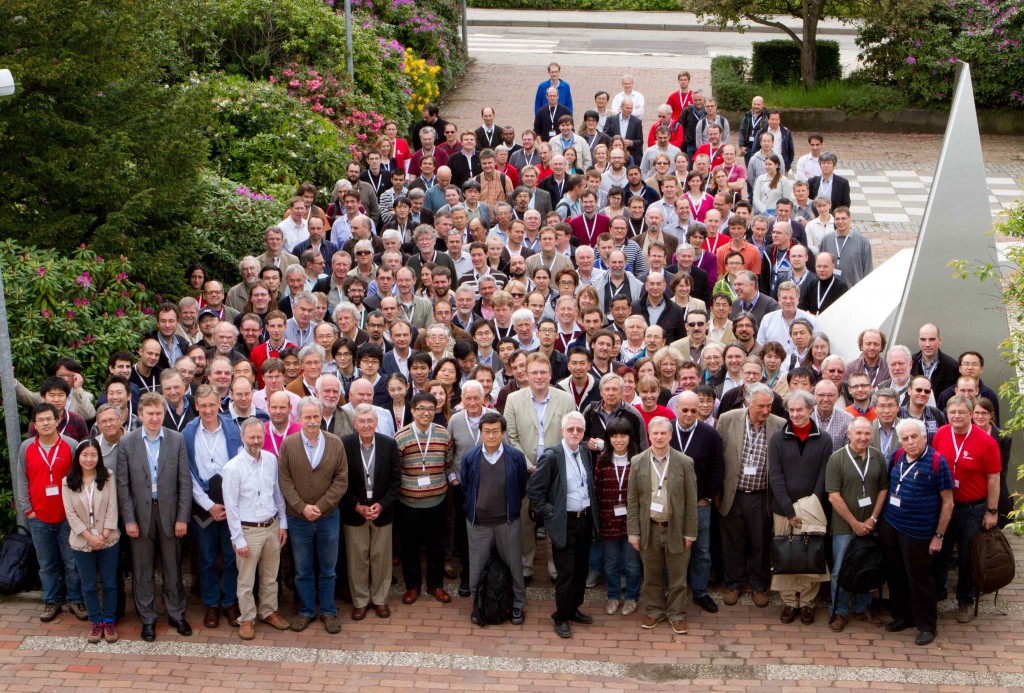This year, the regional Linear Collider workshop is taking place in Europe at DESY (Hamburg, Germany) from 27 to 31 May 2013. The participants have been welcomed by a spectacular wide chromatic range of greens in Hamburg, accompanied by the inevitable rain and sun that both make this wonderful manifestation of nature possible. The magic potion served by the organisers (distributing umbrellas in the conference bags) has resulted in some cloudless skies.
The meeting coincides with very many recent events, facts and results – all of them relevant to the linear collider project. Enthusiastic discussions during the sessions, coffee breaks or at lunch and dinner did cover all these topic.
On the physics front, the Large Hadron Collider (LHC) results from the 7-TeV and 8-TeV runs confirm the discovery of a boson with mass of around 125 GeV, also named “H(125)”. “A” boson that, with present accuracy, each time reveals itself to look more and more like “the” long-sought Higgs boson. However, this new type of matter and new type of interaction, as was described by Jonathan Bagger in his introductory talk, needs a very extensive physics programme to probe its real nature: a programme that the LHC and the High Luminosity Large Hadron Collider (LHC’s next step) together with a linear collider with the characteristics of the ILC or CLIC can test intensively and accurately. The high precision provided by a linear collider will be necessary to understand whether this particle is in fact “the” Higgs boson as predicted in the Standard Model of particle physics and responsible for the electroweak symmetry breaking, whether it is elementary or composite, or whether it is embedded in more general models with extended Higgs doublets. Researches on the top quark should also be kept very present in our mind as it is often forgotten. The top quark is the heaviest elementary particle whose Yukawa coupling is at the order of one (the Yukawa interaction is used to describe its interaction with the Higgs boson) and may well hide mysteries to unveil. The LHC is in fact a top factory and most of the top quark characteristics should be measured there. However, some studies will still remain, awaiting the linear collider to come with its high-precision measurement. The top quark mass, the Yukawa coupling and the study of its anomalous couplings are a few examples. To study physics beyond the Standard Model, the present LHC limits disfavour the presence of new physics to energies below the TeV range. But there are still scenarios which allow exploring capabilities of new physics in the range of the ILC and certainly this argument is even more true for CLIC. The next LHC run at 13-14 TeV will be crucial to better understand the situation in this topic.
The ILC project has finished its Technical Design Report for the accelerator and the Detailed Baseline Design for the detectors. This enormous effort from the linear collider community demonstrates that the ILC can be built as a staged linear collider from 250 GeV to 1 TeV and can perform the relevant physics programme described previously. A volume describing the physics case of the ILC complements these documents. In getting to the present situation cooperation with CLIC has been very beneficial and positive. A worldwide event, “From design to reality”, is organised on 12 June at the same time in Tokyo, Japan, at CERN, Switzerland and at Fermilab, US, to formally present all this documentation to the physics community and the general public. In coincidence with this event, the old linear collider structure, which has managed to lead the project to the present status, will finish its mandate and transition to the new Linear Collider Collaboration led by Lyn Evans. We all recognise and thank the following people for their excellent work and leadership: Jonathan Bagger as chair of the ILC Steering Committee, Barry Barish as director of the Global Design Effort and Sakue Yamada as the Research Director.
From Japan, an extremely encouraging message to host the ILC is growing in strength and is becoming a solid hope for the community. Local negotiations at the very high level are occurring in Japan and contacts with other countries, like the United States, have already started. The site selection is expected by this summer. Despite the difficult economic situation around the world, the present good results in particle physics, the fantastic work of the community with very limited resources and the existence of the Japanese initiative allow us to believe that in fact “we can” make it.
In addition, very important processes are happening also in Europe and US. In Europe, the update of the strategy for particle physics will be finished and adopted today. Highly positive recommendations for CLIC and ILC-Japan activities are included in this document. For the US the ‘Snowmass process’, “Developing a US Strategy for Particle physics”, is being performed. The results and recommendations of this process will soon be publically available, as well.
The very pleasant lab atmosphere of DESY embedded in its green scenario has thus provided a warm environment encouraging for in-depth discussions on the reality and prospects of the linear collider project. We all thank the DESY Linear Collider group for providing the splendid atmosphere and organisation of the event and especially Karsten Büßer who chairs the local organising committee.




Recent Comments